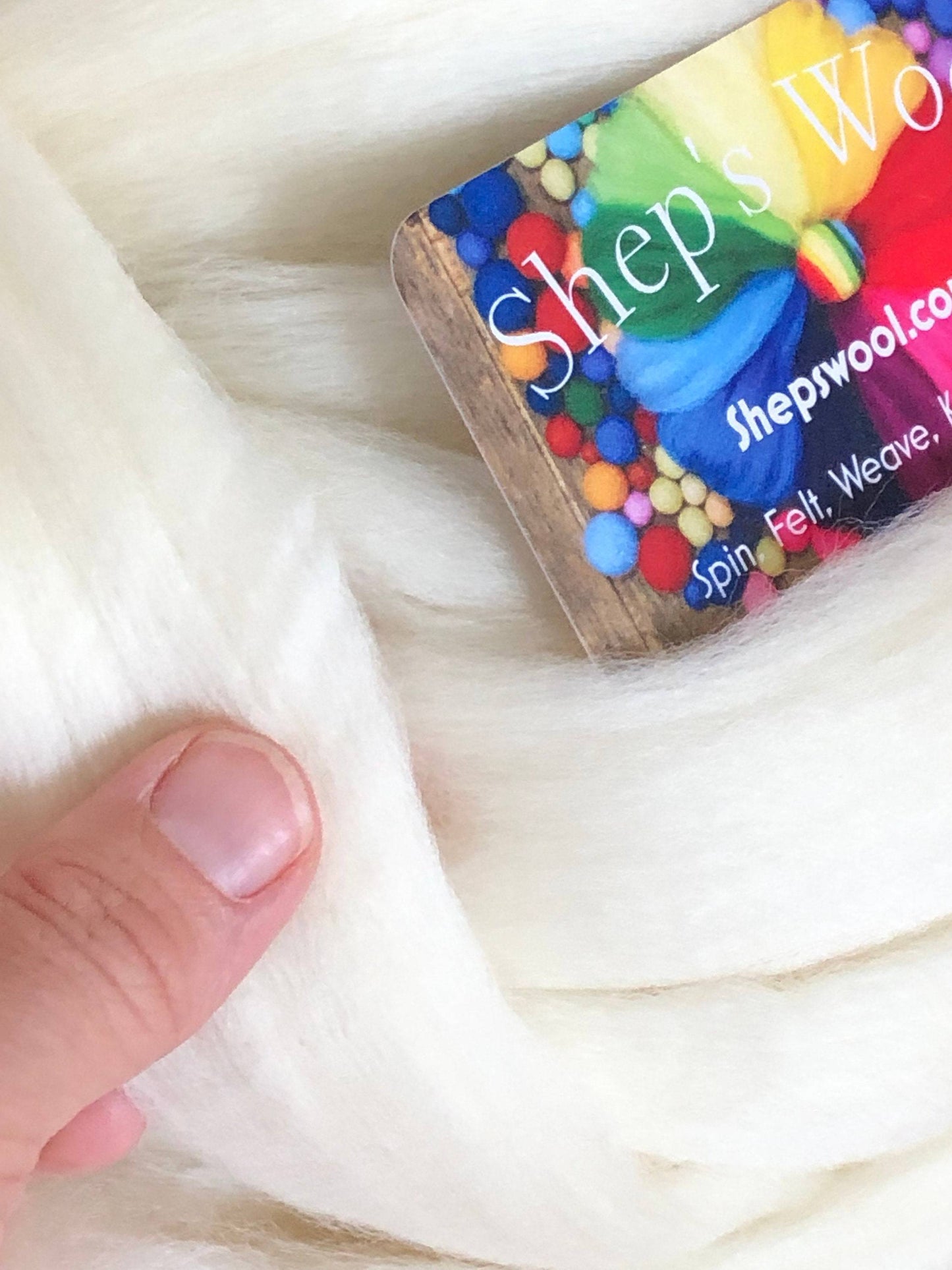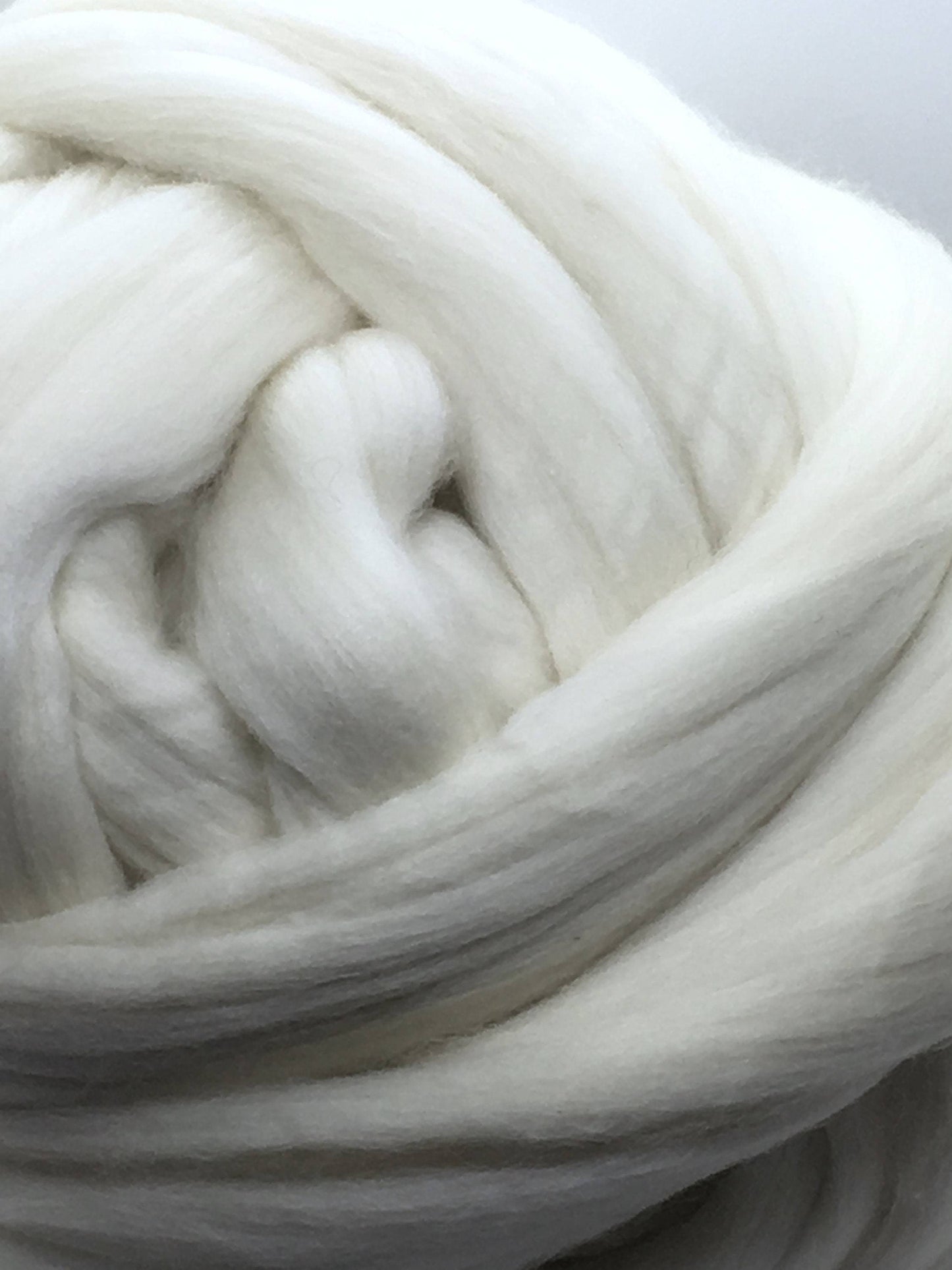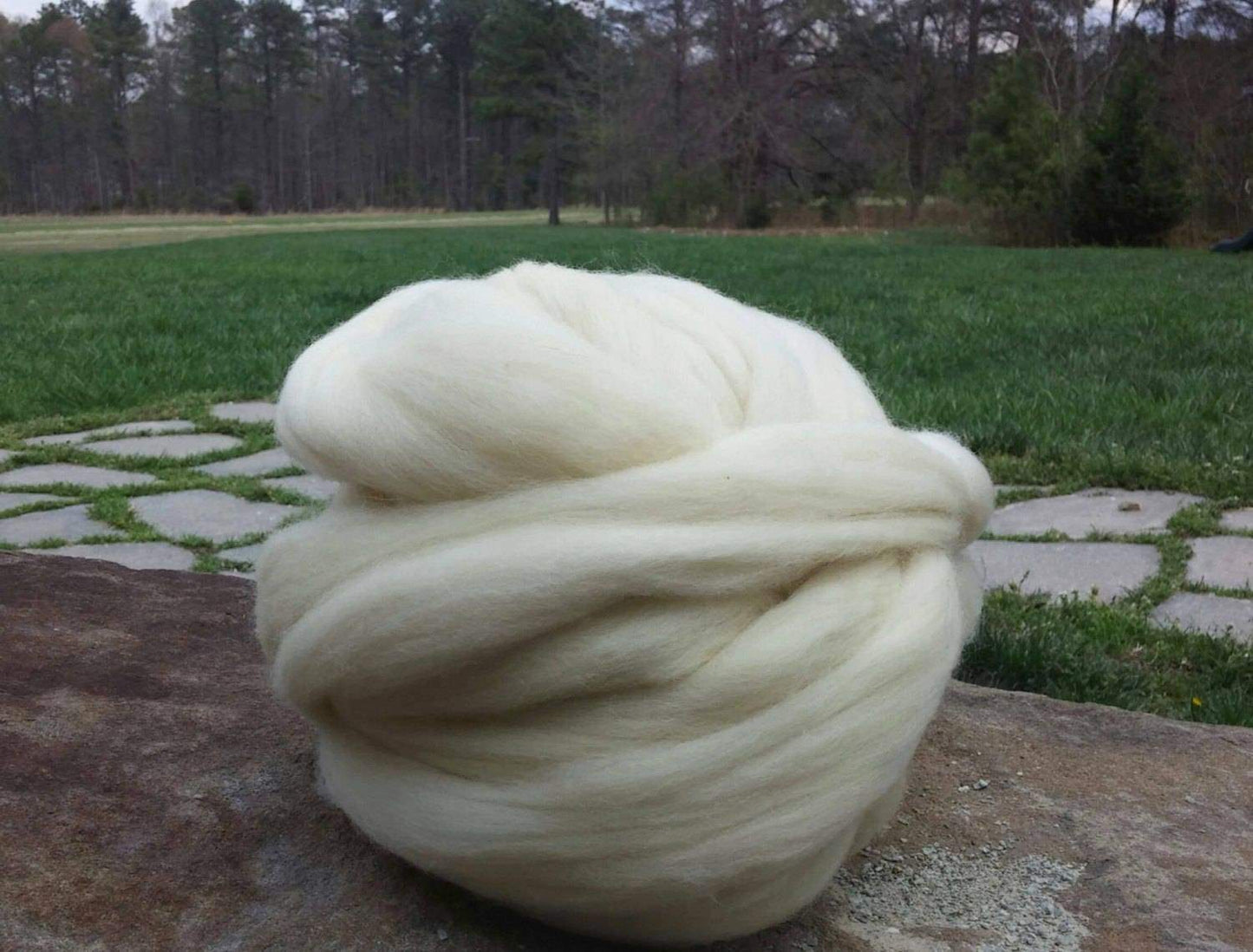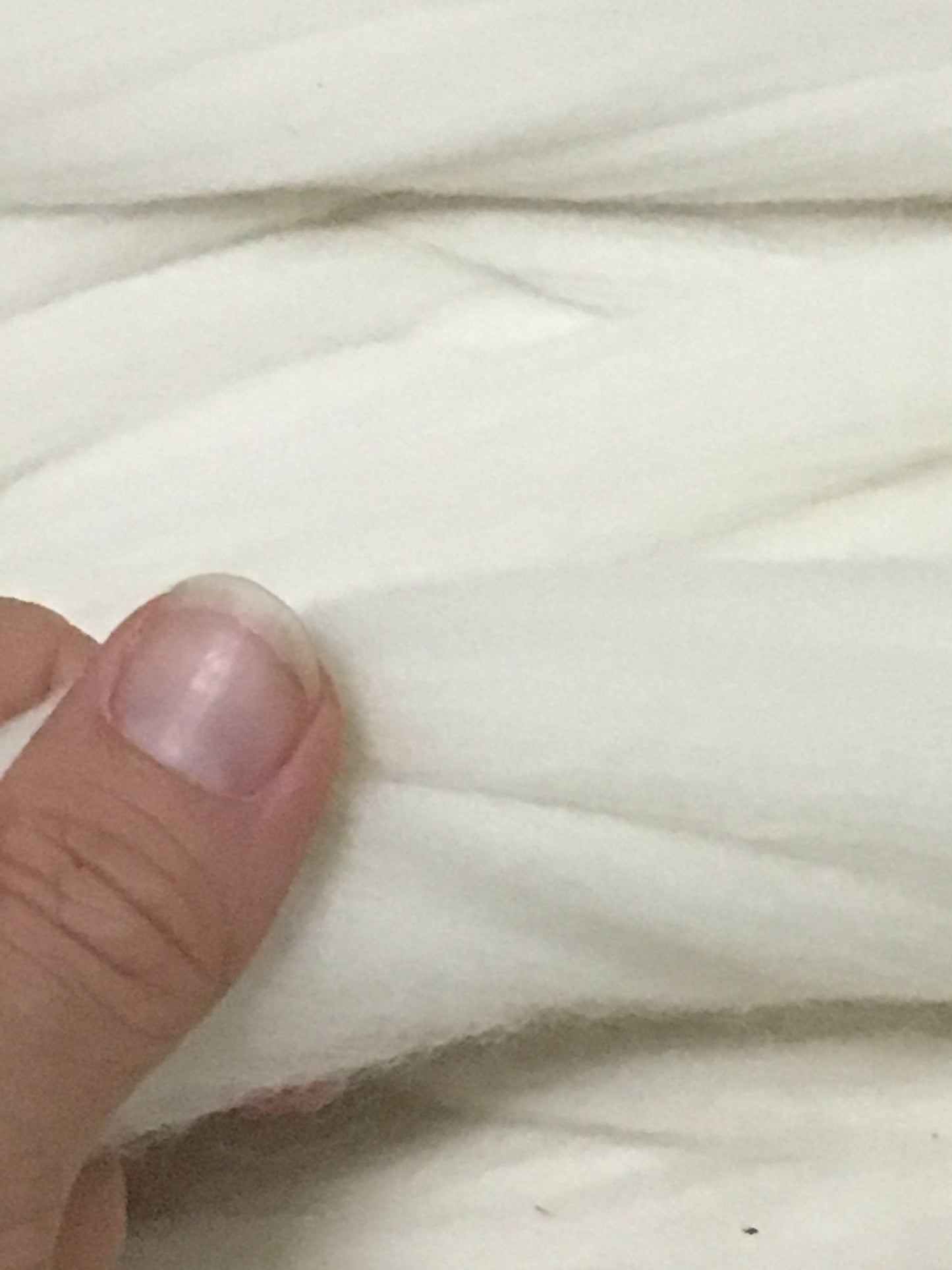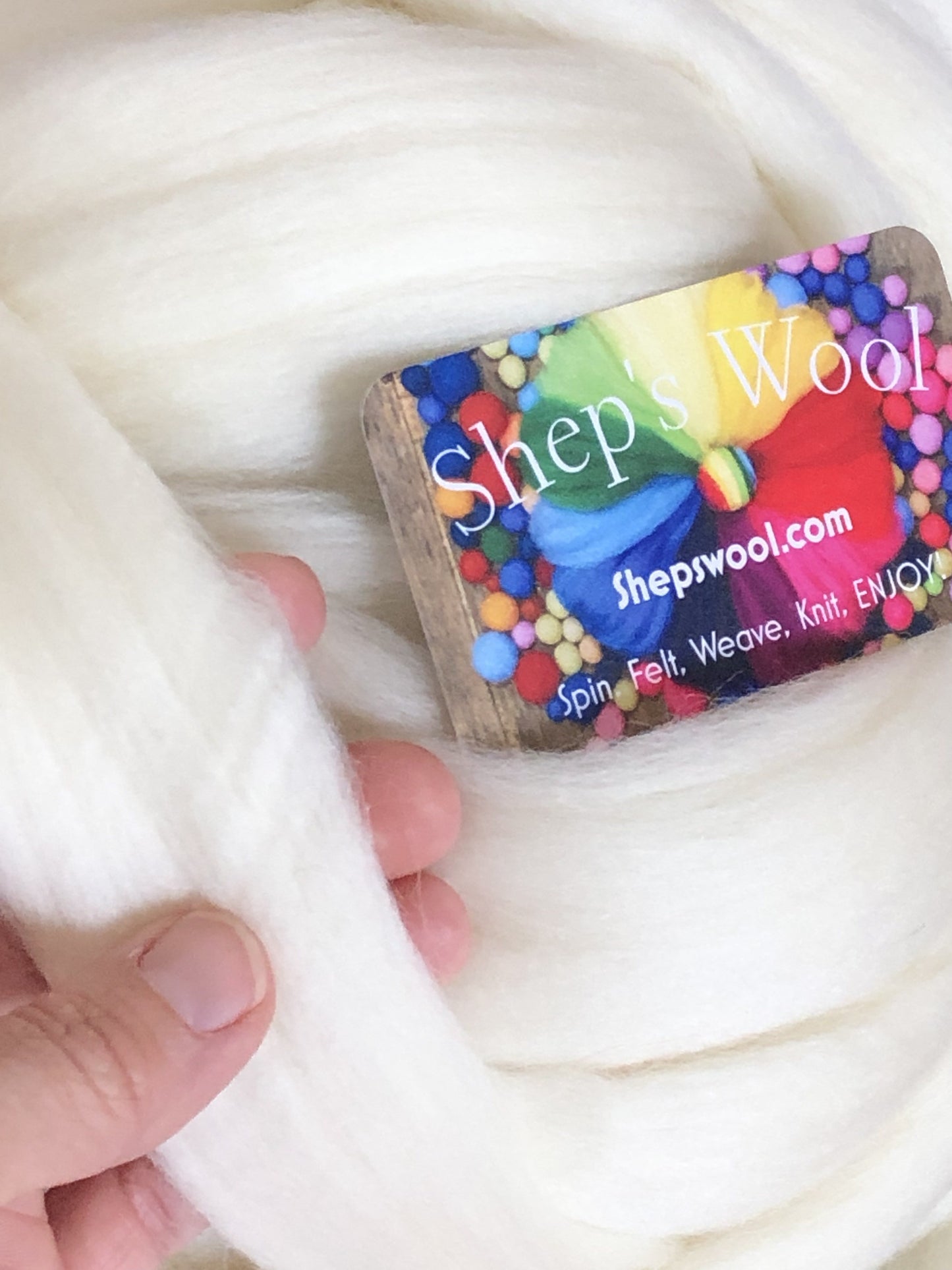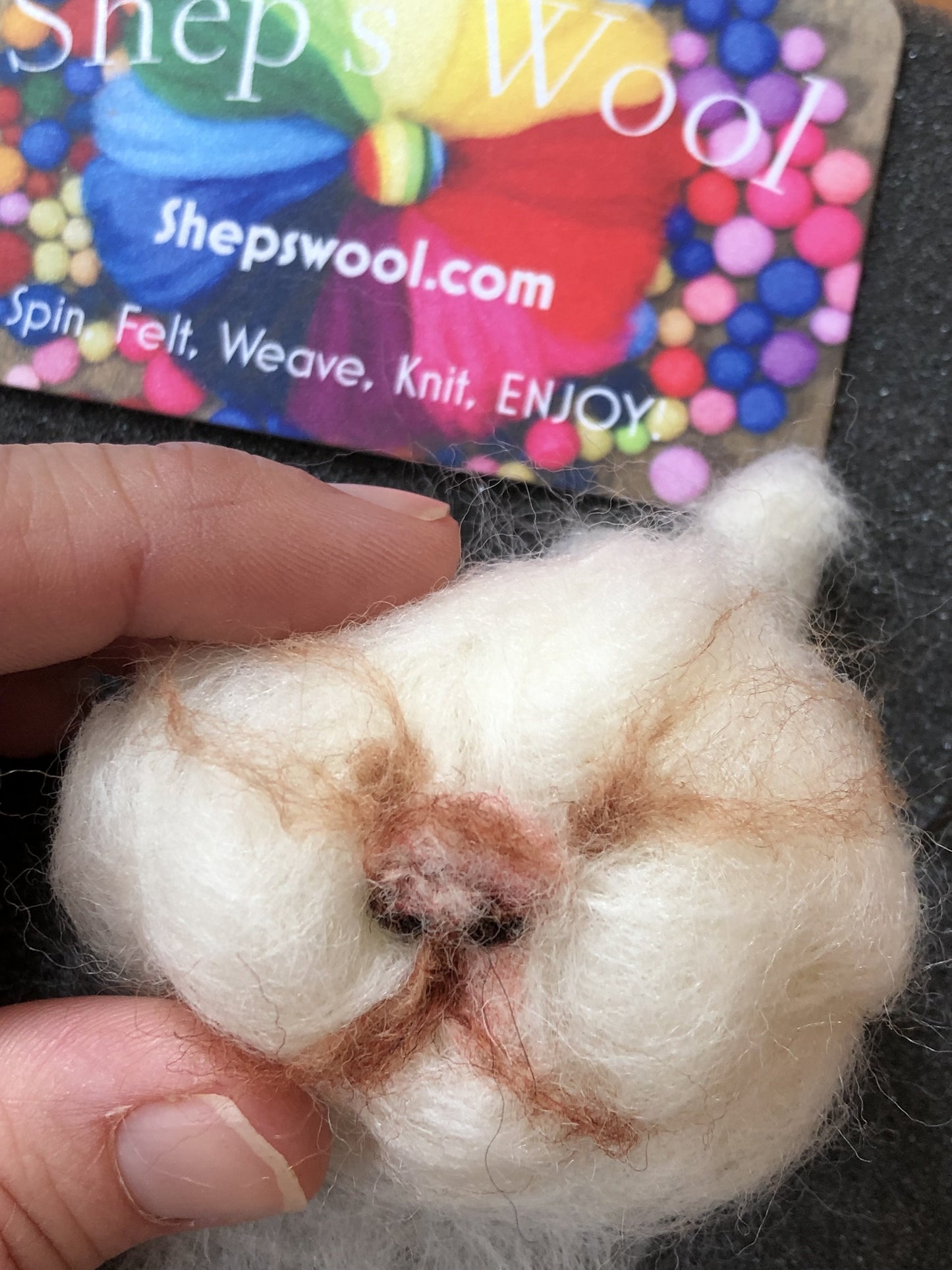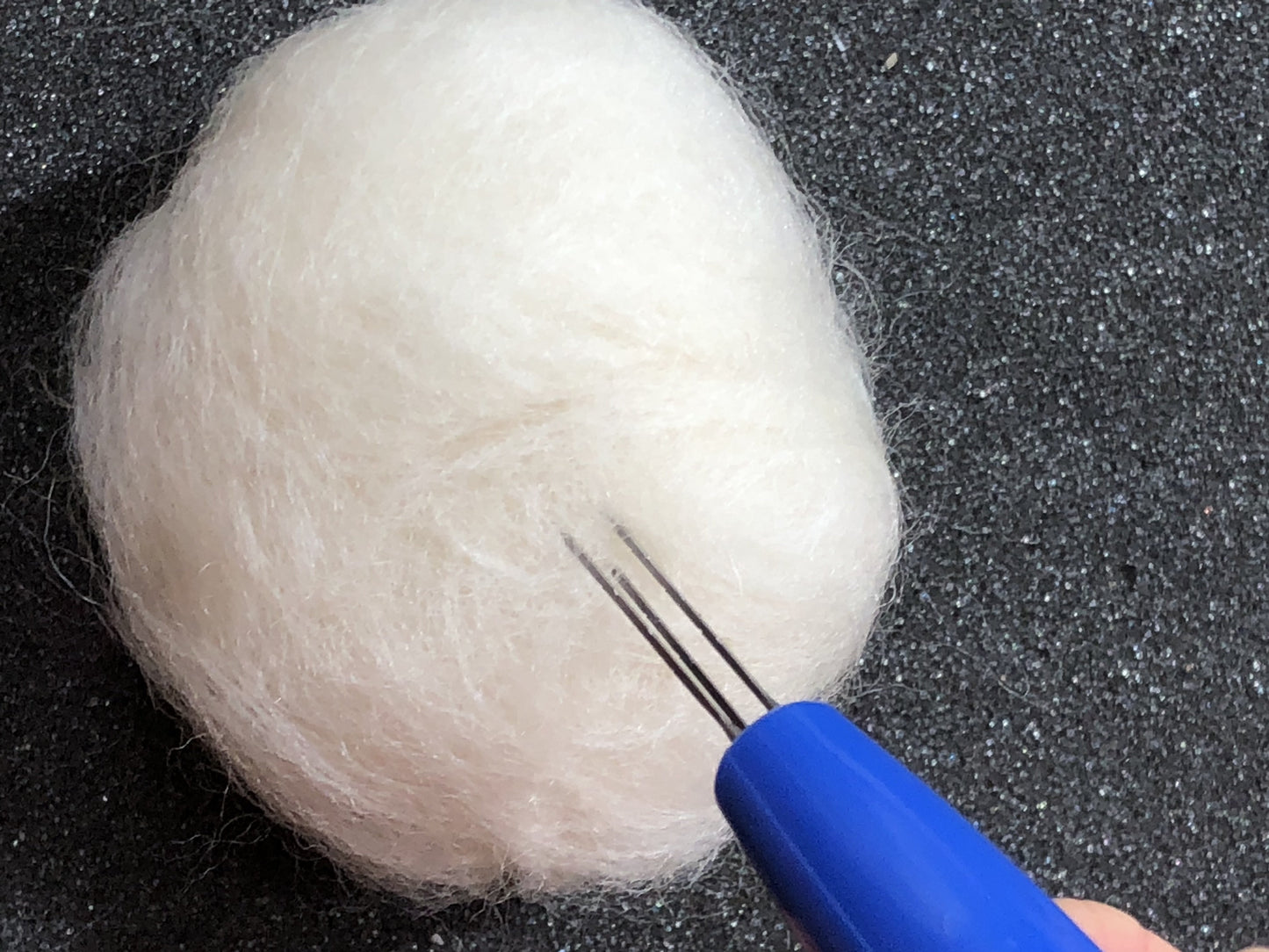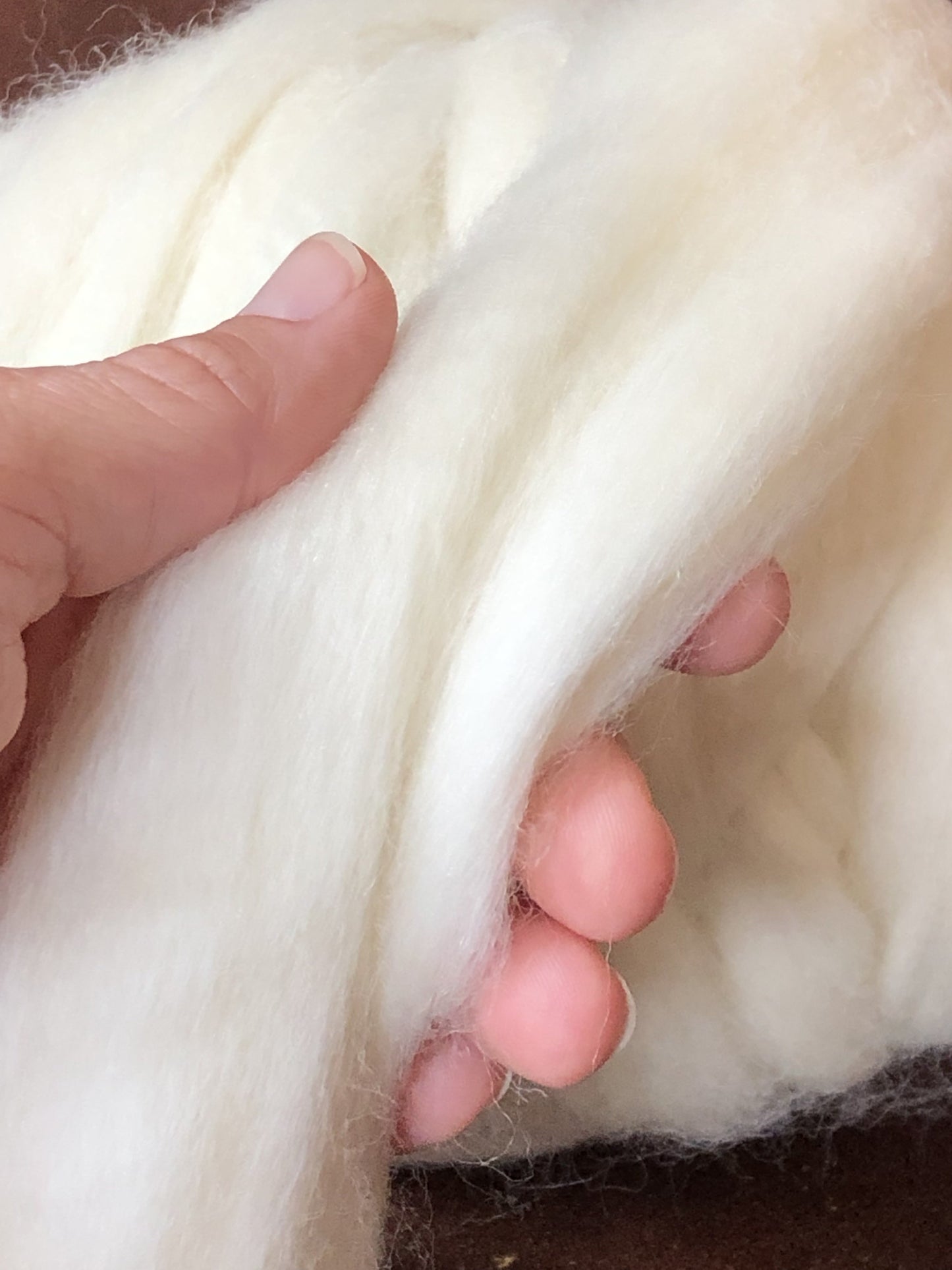Shep's Wool
Nuno Wool Roving, 1lb (or MORE!), Wool for Nuno felting, Roving, wool roving, Wool For Felting, Wool Felting, Nuno felting wool,nuno fiber
Regular price
$28.97
Regular price
Sale price
$28.97
Unit price
per
Shipping calculated at checkout.
Couldn't load pickup availability
Soft Beautiful Domestic Wool Top Roving Creamy White color (unbleached so it's not processed until brittle and bright white) and super soft. It is easy on the eyes soft natural white. Simply Beautiful to look at and handle! Felts, dye's and spins into yarn like a dream! Beginners and advanced crafters both love our wool!
Instructions for Wet Felting and Nuno Felting -
Wet felting is the process of combining layers of wool roving and/or wool yarns fibers into one flat piece of felt fabric. This is what people think about as the traditional or oldest felting method. Nuno felting is the process of felting roving wool, wool roving and/or wool yarns onto another fabric.
Lets get started!
The Wet and Nuno felting techniques are the same except for a single slight variation in step 4, and water temperature. Several people substitute cold to room temperature water for the Nuno felting process as things have to progress more slowly.
1) In the dish tub, make a bath of hot soapy water around an inch or so deep, and put a piece of the textured material you choose in the bottom for friction. Hot water and soap help open the wool scales (microscopic ‘hooks’ on the wool fibers that lock together (felting). Use cooler water for the Nuno technique.
Note: You can also lay this out on a flat protected work surface if you need a larger area than a dish tub allows. Many people do this outside or someplace you can drip soapy water without worrying about the flooring. Things are going to get wet, including you!
2) Lay down your roll-up mat (this roll up mat needs to be wider than your project, long enough to roll up all around the project, and stiff enough to hold it’s tube shape when rolled up. Some people use sections of pool cover, as well as sushi mats, and others. It is important that the water be able to move through it, and there should be some texture, which helps the felting process go faster).
3) Now, lay down tulle fabric on top of your roll-up mat.
4) Lay out thin layers of Shep's wool roving and/or wool yarns on the tulle fabric, building up evenly as you go. You can use all kinds of colors and designs just by laying out different shapes and patches of roving. Remember, your piece is going to shrink as it felts so you want to make it slightly larger than you think you will need. Also keep in mind that you are creating a flat sheet of felt, so building up your layers unevenly will result in a piece of felt fabric with uneven thickness.
*4a) If you are doing Nuno felting with a silk scarf or fabric, at this point you want to lay your scarf or fabric out on top of the roving and tulle and then repeat step 4, placing more roving and/or wool yarn in the same places on top of the scarf or fabric. You can also have design elements on top made with yarns or roving. You will then have roving on both sides of the material, like a mirror image, so that they tangle together through the fabric. Like a sandwich!
5) Next, wet down everything on your roll-up mat with some of the hot soapy water (a squeeze bottle like ketchup/picnic bottle is handy for this), and then roll up the mat and secure it closed with some string or strips of fabric. (cool water for Nuno technique)
6) Now immerse the bundled tube in the hot (cool water for Nuno technique) soapy water bath and start rolling/rubbing it on the textured liner you placed in the bottom of the dish tub. Push down while you roll to increase the friction on your felt.
Note: If you are working on a table with a big bundle, you will need to continually soak the bundle with hot soapy water (you need to keep it warm and wet. Some squeeze bottles filled with hot soapy water can help). Make sure you put pressure on all parts of your bundle at some time, rather than rolling in the same places over and over, as the friction is the main catalyst for felting. Using your forearms and weight to roll it can create more pressure and friction, and help keep you from getting tired.
7) There is no set amount of time it will take for your wool to felt. Many factors affect the speed, such as the water temperature, the amount of friction, the amount of material to be felted, etc. So, every now and then, open your bundle and take a peek at how your felt is doing. If it is solid felt it is done; if it is still loose in places, just roll it back up and keep rolling. If the water starts to get chilly warm it up with some hot water. You need to keep it warm because this keeps the wool scales opened up, allowing it to tangle/felt faster and easier. You also want to keep your bundle wet and soapy throughout the process (a squeeze bottle with hot soapy water helps).
8) When you are happy with the degree of felting, unroll your project and rinse out the soap (a shower spray works nice for this and helps things felt up just a bit more). You can rinse and dry the piece before or after removing the tulle base. Though the wool fiber may ‘adhere’ slightly to the tulle base, but it should mostly just pull off. When you have rinsed out all the soap you might want to rinse the felt in a bit of water and vinegar (or citric acid). This will help to smooth out the wool scales a bit, locking them more in place, as well as helping neutralize the slight alkalinity of the soap, which over time can be damaging to protein fibers (i.e. wool).
9) Finally, Dry out your felt by blotting it with a clean towel. You can also roll up your felt in a towel and press on it, or just lay the wool out in a dry location. It can take some time for heavy felt to completely dry out, on the order of a day or two. Essentially you now have a piece of wool fabric, and it should be treated as such in regards to laundering.
10) Enjoy your Nuno Felt!
Instructions for Wet Felting and Nuno Felting -
Wet felting is the process of combining layers of wool roving and/or wool yarns fibers into one flat piece of felt fabric. This is what people think about as the traditional or oldest felting method. Nuno felting is the process of felting roving wool, wool roving and/or wool yarns onto another fabric.
Lets get started!
The Wet and Nuno felting techniques are the same except for a single slight variation in step 4, and water temperature. Several people substitute cold to room temperature water for the Nuno felting process as things have to progress more slowly.
1) In the dish tub, make a bath of hot soapy water around an inch or so deep, and put a piece of the textured material you choose in the bottom for friction. Hot water and soap help open the wool scales (microscopic ‘hooks’ on the wool fibers that lock together (felting). Use cooler water for the Nuno technique.
Note: You can also lay this out on a flat protected work surface if you need a larger area than a dish tub allows. Many people do this outside or someplace you can drip soapy water without worrying about the flooring. Things are going to get wet, including you!
2) Lay down your roll-up mat (this roll up mat needs to be wider than your project, long enough to roll up all around the project, and stiff enough to hold it’s tube shape when rolled up. Some people use sections of pool cover, as well as sushi mats, and others. It is important that the water be able to move through it, and there should be some texture, which helps the felting process go faster).
3) Now, lay down tulle fabric on top of your roll-up mat.
4) Lay out thin layers of Shep's wool roving and/or wool yarns on the tulle fabric, building up evenly as you go. You can use all kinds of colors and designs just by laying out different shapes and patches of roving. Remember, your piece is going to shrink as it felts so you want to make it slightly larger than you think you will need. Also keep in mind that you are creating a flat sheet of felt, so building up your layers unevenly will result in a piece of felt fabric with uneven thickness.
*4a) If you are doing Nuno felting with a silk scarf or fabric, at this point you want to lay your scarf or fabric out on top of the roving and tulle and then repeat step 4, placing more roving and/or wool yarn in the same places on top of the scarf or fabric. You can also have design elements on top made with yarns or roving. You will then have roving on both sides of the material, like a mirror image, so that they tangle together through the fabric. Like a sandwich!
5) Next, wet down everything on your roll-up mat with some of the hot soapy water (a squeeze bottle like ketchup/picnic bottle is handy for this), and then roll up the mat and secure it closed with some string or strips of fabric. (cool water for Nuno technique)
6) Now immerse the bundled tube in the hot (cool water for Nuno technique) soapy water bath and start rolling/rubbing it on the textured liner you placed in the bottom of the dish tub. Push down while you roll to increase the friction on your felt.
Note: If you are working on a table with a big bundle, you will need to continually soak the bundle with hot soapy water (you need to keep it warm and wet. Some squeeze bottles filled with hot soapy water can help). Make sure you put pressure on all parts of your bundle at some time, rather than rolling in the same places over and over, as the friction is the main catalyst for felting. Using your forearms and weight to roll it can create more pressure and friction, and help keep you from getting tired.
7) There is no set amount of time it will take for your wool to felt. Many factors affect the speed, such as the water temperature, the amount of friction, the amount of material to be felted, etc. So, every now and then, open your bundle and take a peek at how your felt is doing. If it is solid felt it is done; if it is still loose in places, just roll it back up and keep rolling. If the water starts to get chilly warm it up with some hot water. You need to keep it warm because this keeps the wool scales opened up, allowing it to tangle/felt faster and easier. You also want to keep your bundle wet and soapy throughout the process (a squeeze bottle with hot soapy water helps).
8) When you are happy with the degree of felting, unroll your project and rinse out the soap (a shower spray works nice for this and helps things felt up just a bit more). You can rinse and dry the piece before or after removing the tulle base. Though the wool fiber may ‘adhere’ slightly to the tulle base, but it should mostly just pull off. When you have rinsed out all the soap you might want to rinse the felt in a bit of water and vinegar (or citric acid). This will help to smooth out the wool scales a bit, locking them more in place, as well as helping neutralize the slight alkalinity of the soap, which over time can be damaging to protein fibers (i.e. wool).
9) Finally, Dry out your felt by blotting it with a clean towel. You can also roll up your felt in a towel and press on it, or just lay the wool out in a dry location. It can take some time for heavy felt to completely dry out, on the order of a day or two. Essentially you now have a piece of wool fabric, and it should be treated as such in regards to laundering.
10) Enjoy your Nuno Felt!
